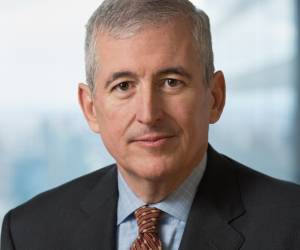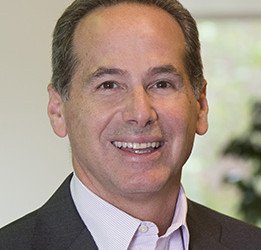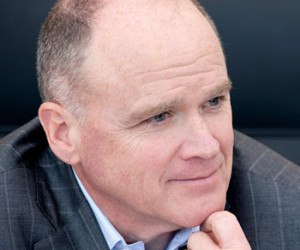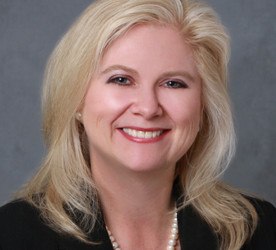This article is part of our insurance innovators interview series.
 Stanley A. Galanski, President and CEO, The Navigators Group, Inc.
Stanley A. Galanski, President and CEO, The Navigators Group, Inc. Mark E. Watson III, President and Chief Executive Officer, Argo Group International Holdings, Ltd.
Mark E. Watson III, President and Chief Executive Officer, Argo Group International Holdings, Ltd. Kevin H. Kelley, Chief Executive Officer, Ironshore Inc.
Kevin H. Kelley, Chief Executive Officer, Ironshore Inc. John Wurzler, President, OneBeacon Technology Insurance
John Wurzler, President, OneBeacon Technology Insurance Alan B. Colberg, President and Chief Executive Officer, Assurant, Inc.
Alan B. Colberg, President and Chief Executive Officer, Assurant, Inc. Manny Rios, President and CEO, American Modern Insurance Group
Manny Rios, President and CEO, American Modern Insurance Group Dave Pratt, General Manager, Usage-Based Insurance, Progressive
Dave Pratt, General Manager, Usage-Based Insurance, Progressive Berto Sciolla, EVP and Manager of North American Treaty Reinsurance,Gen Re
Berto Sciolla, EVP and Manager of North American Treaty Reinsurance,Gen Re Greg Hendrick, Chief Executive, Insurance, XL Catlin
Greg Hendrick, Chief Executive, Insurance, XL Catlin Anand Rao, Principal, PwC U.S. Advisory Practice
Anand Rao, Principal, PwC U.S. Advisory Practice Mike McGavick, Chief Executive Officer, XL Catlin
Mike McGavick, Chief Executive Officer, XL Catlin David M. Lightfoot, Managing Director, Head of GC Analytics – Americas, Guy Carpenter
David M. Lightfoot, Managing Director, Head of GC Analytics – Americas, Guy Carpenter Conan Ward, Chief Executive Officer, Hamilton USA
Conan Ward, Chief Executive Officer, Hamilton USA Ming Lee, Chief Executive Officer, AIR Worldwide
Ming Lee, Chief Executive Officer, AIR Worldwide Laura Hay, National Insurance Sector Leader, KPMG LLP
Laura Hay, National Insurance Sector Leader, KPMG LLP John Lupica, Vice Chairman, ACE Group; Chairman, Insurance–North America
John Lupica, Vice Chairman, ACE Group; Chairman, Insurance–North America
 Stanley A. Galanski
Stanley A. GalanskiNavigators Group Inc., President and Chief Executive Officer
Q1: In your view, what has been the greatest innovation in the P/C insurance industry in recent years? Explain.
Galanski (Navigators): The development of construction wrap-ups, also referred to as “project policies,” has allowed construction specialists like Navigators to insure construction risks that would have been very difficult if not prohibitively expensive to insure in a traditional manner. We entered the wrap-up market a little over a decade ago when it was still a relatively new approach. Today, it is a favored approach for sophisticated construction projects.
Q2: Describe the greatest innovation at your company during your tenure. (It could be a product, process or service.) How did it come about? (Feel free to describe more than one.)
Galanski (Navigators): The greatest innovation at Navigators over the last decade has been marrying our proprietary and home-grown management information capabilities with mobile technology.
Today our underwriters and claims professionals can access amazingly detailed management information on the performance of their books of business from an iPad. Combining industry-leading access to data with mobility has been a winning combination.
Q3: In your view, what innovation or innovator outside the insurance industry has had or is having the greatest impact on the P/C insurance industry?
Galanski (Navigators): Without question, it is the Internet. Today the level of detail and accuracy of information that is readily available to consumers and businesses globally has changed the game. This spreading of knowledge places greater value on specialist underwriters who bring meaningful expertise to solving problems, rather than simply providing a product.
Q4: Describe one or more ways in which your company encourages innovation. (Feel free to describe any elements of the culture or process.)
Stanley Galanski, Navigators
I have found the best source of innovation is spending time with customers—listening to them, to understand their needs and concerns, and then acting upon it. That can occur at any level of a company.
Q5: What is the biggest obstacle to innovation within the insurance industry? Explain. What is your company doing (or what can the industry do) to overcome this obstacle?
Galanski (Navigators): The biggest obstacles to innovation in the U.S. insurance industry are regulatory requirements and the historical willingness of courts to seek deep pockets to pay claims regardless of coverage. It is increasingly difficult to simply express a grant of insurance coverage. As a result, our policies have become more complex and legalistic rather than simplified.
Q6: Do you believe the next innovation to impact the P/C insurance industry will come from inside the industry or from an external innovator? Why?
Galanski (Navigators): The most impactful of the current innovative actions within the industry is coming from “outsiders”—hedge funds and other large financial investors. They have gone from investing in insurers to becoming risk-takers through special purpose vehicles and by capitalizing reinsurers. By transforming insurers’ sources of capital, “outsiders” have fundamentally changed the reinsurance industry. It’s hard to imagine their impact will stop there.
Q8: What is the best book you have read about innovation? The best course or seminar you have attended? What was a key takeaway from the book or education session?
Galanski (Navigators): “Managing in the Next Society” by Peter F. Drucker. In it, Drucker made the observation, “The reason that the financial services industry is in trouble is quite simple. The dominant financial services institutions have not made a single major innovation in 30 years.” Of course, Drucker died in 2005. It would have been fascinating to hear his views after the financial crisis.
Q10: Have you ever collaborated with market competitors to move an innovation forward? If so, why did collaboration make sense in this situation?
Galanski (Navigators): The Lloyd’s market is a perfect example of collaborating to drive innovation. New ideas can be developed in the subscription market because a respected leader can establish the coverage terms and price, with the placement to be completed by others who “follow” the leader without any one risk-taker having to take on an inordinate amount of risk. We have been part of the Lloyd’s market since 1998. Lloyd’s is a wonderful vehicle for insurance innovation globally.
Q11: Outside of providing risk transfer solutions, what are the most likely areas in which insurers can be innovators? Can P/C insurers disrupt other industries or provide noninsurance solutions by applying innovations developed through their core skills in underwriting and risk analysis, settlement negotiations, catastrophe modeling, environmental science or other areas?
Galanski (Navigators): While it is tempting to think about disruptive technologies, insurers are best at innovating when they succeed in two fundamental areas. First, by providing fantastic service through creating a pleasant, efficient and unique experience in which their brokers and policyholders can interact with them. Second, by empowering the most talented people they can find, which requires a superior work environment in which they can prosper and desire to build a long-term career. The two are inextricably linked. Great service comes from terrific people working in a positive and fun environment. That’s an environment in which innovation will be evident.
Read more Innovation Insights by Person:
 Stanley A. Galanski, President and CEO, The Navigators Group, Inc.
Stanley A. Galanski, President and CEO, The Navigators Group, Inc. Mark E. Watson III, President and Chief Executive Officer, Argo Group International Holdings, Ltd.
Mark E. Watson III, President and Chief Executive Officer, Argo Group International Holdings, Ltd. Kevin H. Kelley, Chief Executive Officer, Ironshore Inc.
Kevin H. Kelley, Chief Executive Officer, Ironshore Inc. John Wurzler, President, OneBeacon Technology Insurance
John Wurzler, President, OneBeacon Technology Insurance Alan B. Colberg, President and Chief Executive Officer, Assurant, Inc.
Alan B. Colberg, President and Chief Executive Officer, Assurant, Inc. Manny Rios, President and CEO, American Modern Insurance Group
Manny Rios, President and CEO, American Modern Insurance Group Dave Pratt, General Manager, Usage-Based Insurance, Progressive
Dave Pratt, General Manager, Usage-Based Insurance, Progressive Berto Sciolla, EVP and Manager of North American Treaty Reinsurance,Gen Re
Berto Sciolla, EVP and Manager of North American Treaty Reinsurance,Gen Re Greg Hendrick, Chief Executive, Insurance, XL Catlin
Greg Hendrick, Chief Executive, Insurance, XL Catlin Anand Rao, Principal, PwC U.S. Advisory Practice
Anand Rao, Principal, PwC U.S. Advisory Practice Mike McGavick, Chief Executive Officer, XL Catlin
Mike McGavick, Chief Executive Officer, XL Catlin David M. Lightfoot, Managing Director, Head of GC Analytics – Americas, Guy Carpenter
David M. Lightfoot, Managing Director, Head of GC Analytics – Americas, Guy Carpenter Conan Ward, Chief Executive Officer, Hamilton USA
Conan Ward, Chief Executive Officer, Hamilton USA Ming Lee, Chief Executive Officer, AIR Worldwide
Ming Lee, Chief Executive Officer, AIR Worldwide Laura Hay, National Insurance Sector Leader, KPMG LLP
Laura Hay, National Insurance Sector Leader, KPMG LLP John Lupica, Vice Chairman, ACE Group; Chairman, Insurance–North America
John Lupica, Vice Chairman, ACE Group; Chairman, Insurance–North America
Read other innovator’s response by question:
- Q1: The greatest innovation in the P/C insurance industry
- Q2: Describe the greatest innovation at your company
- Q3: Innovation or innovator outside the insurance industry
- Q4: How your company encourages innovation
- Q5: The biggest obstacle to innovation within the insurance industry?
- Q6: The next innovation to impact the P/C insurance industry
- Q7: Your role in leading innovation.
- Q8: Best book you have read about innovation
- Q9: Describe a failed initiative at your company
- Q10: Collaborating with market competitors
- Q11: Can P/C insurers disrupt other industries?





















 $1 Trillion! 2024 P/C Industry Direct Premiums At Record Level
$1 Trillion! 2024 P/C Industry Direct Premiums At Record Level  How Cincinnati Insurance Does E&S
How Cincinnati Insurance Does E&S  Early CSU Hurricane Season Forecast Calls for ‘Above-Average’ Activity
Early CSU Hurricane Season Forecast Calls for ‘Above-Average’ Activity  Tiffany Diamonds Worth $770K Recovered 2 Weeks After Suspect Swallowed Them
Tiffany Diamonds Worth $770K Recovered 2 Weeks After Suspect Swallowed Them 

